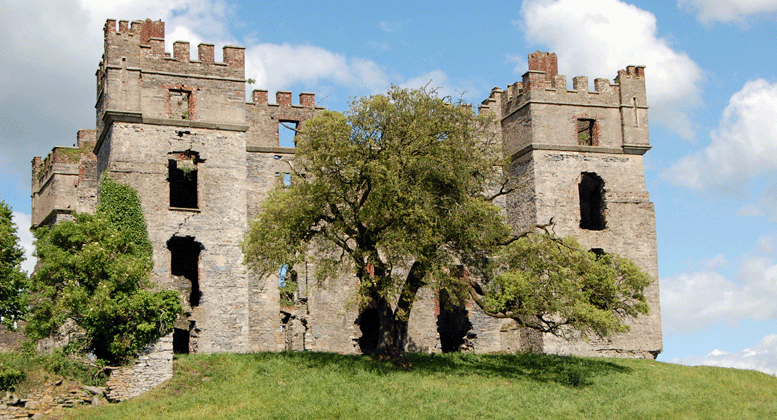Located on a hill overlooking the town of Raphoe is Bishop’s Palace that was built in 1636 by John Leslie, Bishop of Raphoe (the fighting Bishop).
It is believed Leslie used stones from a local round tower to construct the four-storey fortified home that has salient angle towers in each corner that still stands today.
History of Raphoe Castle
Within 4 years of being completed Raphoe Castle came under attack during the 1641 Irish Rebellion and withstood the attack until the Bishop was relieved by the Lagganeer army.
When Oliver Cromwell arrived in Ireland during 1649 John Leslie's men deserted him and joined a veteran from the Battle of Kinsale (1601) named Charles Cooke. By 1653 Cooke and his army attacked the palace and Leslie surrendered.
In 1689 it was damaged in an attack by supporters of King James II who were travelling to lay Siege on Derry but was repaired by 1695 by Alexander Cairncross who was made Bishop of Raphoe in 1693.
The castle was attacked again during the United Irishmen Rebellion of 1798 that saw 3 of the rebels killed during the attack.
During 1838 Raphoe Castle was destroyed by a fire that was said to be accidental from coals that fell out of a fire in an upper room. Since then Bishop’s Palace has been in ruins.
Photos of Raphoe Castle (Bishop's Palace)

A view of the Bishop's Palace from the bottom of its defensive hill.

One of the four salient angle towers found in each corner of Raphoe Castle.

A view of the arrow slots located at the back of the Bishops Palace.
View more photos on our facebook page.
Getting to the Bishop's Palace
Getting to the Bishop’s palace is very easy as Raphoe town is very small; it’s literally one street away from the main town centre and very hard to miss. A local man told us the public is not allowed into the grounds but did describe how we could find a small path through the woods that leads up into the palace.
As we came through the small woods we were amazed at how big this dwelling was. I can actually understand how it was labelled as a palace and a castle. It’s as big as a palace but yet designed like a castle built on a steep hill and with 4 corner towers giving it a great defence against any attackers.
Unfortunately, there isn’t much left of the Bishop’s palace except for its main outer walls although you can make out certain rooms such as the main kitchen with its very large very fireplace and was what was once the grand staircase.










